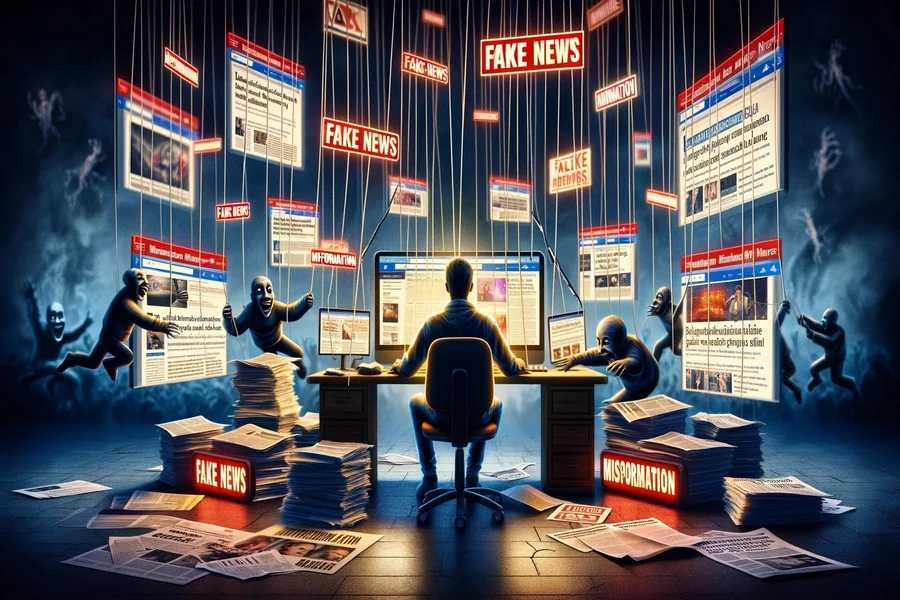The Challenges of Reporting Truth in the Age of Misinformation

Because of digital media, reporting the truth is now more difficult and complex than ever. There is now much more misleading information shared widely which has changed news consumption and trust in media. Information is shared faster now due to social media, rapid communication and constant news coverage, but this has also put down a path for false, biased or misinformation.
In this chaotic situation, journalists and news groups are under a lot of pressure to create information that is correct, fair and backed up. Fake news, misleading content and echo chambers lower people’s trust in the press, pose a challenge to democracy and undermine the role of the press as a source of news.
The Erosion of Public Trust in Media
There is major trust in traditional media outlets continues to drop which is a significant issue in tackling misinformation. It is regularly seen in surveys that more people are starting to doubt the trustworthiness of mainstream journalism. This disbelief is caused by seeing possible biases, sensational news, corporate influence and old cases of wrongdoing by journalists. Because people have less trust in news media, they search elsewhere which leads to the increasing growth of misinformation.
Trying to be fair while inviting viewers to interact with content in more ways than before only makes this challenging. Confirmation bias makes it likely that people only read news that matches their opinions, so misinformation becomes more common in those groups and real news is hardly noticed.
Technological Advances Fueling Misinformation Spread
Modern technology helps journalists but also improves the methods of misinformation distribution. On social media, the platforms center on getting attention for each post which results in posting exaggerated or highly divisive material. It’s easier now for automated bots and deepfakes to quickly make false information look real which even experts find difficult to ID.
Now, most people can create and distribute information without the review by a third party. Because anyone can publish content, traditional journalism is not able to easily ensure its accuracy. In this new situation, misinformation reaches the public before the facts are verified, so journalists have to fix this quickly to stop incorrect information from affecting people’s views.
Verification and Fact-Checking
One of the foremost challenges journalists face today is balancing the need for speed with the imperative of accuracy. The 24-hour news cycle pressures reporters to publish quickly, often with incomplete information. This haste increases the risk of errors and makes thorough fact-checking more difficult.
Fact-checking has become a specialized and vital component of modern journalism, but even rigorous verification processes struggle against the volume and velocity of misinformation. Newsrooms are investing in dedicated fact-checking teams and leveraging AI tools to verify claims, cross-reference sources, and detect manipulated content. However, the challenge remains that corrections or retractions rarely achieve the same visibility as the initial false claims.
Editorial Challenges
Journalists today confront complex ethical dilemmas in their pursuit of truth. Deciding what to report and how to present information amid misinformation campaigns involves balancing transparency, privacy, and public interest. For instance, giving undue attention to falsehoods risks amplifying them, yet ignoring misinformation can allow it to spread unchecked.
The editorial responsibility extends to combating disinformation tactics, including coordinated harassment of journalists, threats to press freedom, and government propaganda. Journalists often operate under increasing physical and digital threats, making truthful reporting not only challenging but dangerous.
Combatting Misinformation
To meet these challenges, media organizations are adopting multi-layered strategies aimed at restoring trust and ensuring truth in reporting:
- Promoting Media Literacy: Educating audiences to critically assess sources, recognize biases, and verify information is essential in empowering consumers against misinformation.
- Collaborative Fact-Checking: Partnerships between newsrooms, tech companies, and independent fact-checkers help pool resources and expertise for more effective verification.
- Transparency in Reporting: Clearly explaining sources, methods, and uncertainties enhances credibility and allows audiences to understand the journalistic process.
- Utilizing Technology: Advanced AI-powered tools help detect fake images, videos, and manipulated texts, allowing journalists to preemptively debunk misinformation.
- Community Engagement: Engaging directly with audiences through comments, social media, and forums builds trust and allows for rapid correction of inaccuracies.
The Role of Social Media Platforms
Because social media platforms distribute information widely, they have a major duty to fight the spread of false news. A number of companies have introduced actions to remove scam content, decrease the spread of false posts by algorithms and back efforts to check the facts.
However, many problems remain because of the large amount of content, the international nature of the platform and how to moderate free speech. Thus, they should involve using social media monitoring and urgent responses into their writing to challenge inaccurate news as quickly as possible.
Challenges Facing Journalists Worldwide
Globally, journalists face unique challenges depending on their political, cultural, and economic contexts. In some regions, state-controlled media, censorship, and repression limit the ability to report truthfully. In others, economic pressures and shrinking newsroom resources hinder investigative journalism and fact-checking efforts.
Misinformation also frequently exploits social divisions, targeting marginalized communities and exacerbating conflicts. Journalists must be sensitive to these dynamics and committed to ethical, inclusive reporting that fosters understanding and dialogue.
FAQs
Q: How does misinformation affect public opinion?
A: Misinformation distorts facts, reinforces biases, and can manipulate public opinion, often leading to polarization and mistrust in institutions.
Q: What tools do journalists use to verify information?
A: Journalists employ fact-checking databases, reverse image searches, AI tools, official records, and direct source interviews to verify information accuracy.
Q: Can social media platforms completely stop misinformation?
A: While platforms have improved moderation, completely eradicating misinformation is unlikely due to the volume and speed of content sharing.
Q: Why is it hard to correct misinformation once it spreads?
A: False information often spreads faster and more widely than corrections, and cognitive biases make people resistant to changing their beliefs.
Q: What role do media literacy programs play?
A: Media literacy empowers individuals to critically evaluate news, recognize biases, and avoid spreading misinformation themselves.
Q: How can journalists protect themselves against misinformation campaigns?
A: By practicing digital security, collaborating with trusted networks, and adhering to ethical standards, journalists can reduce risks from misinformation attacks.








